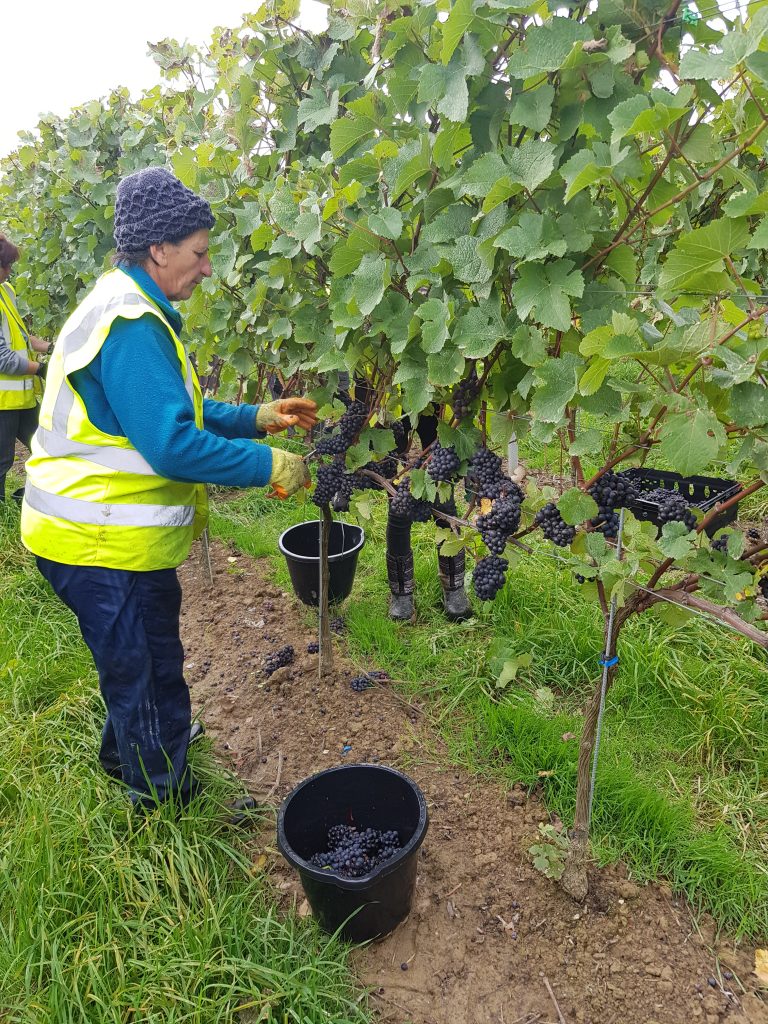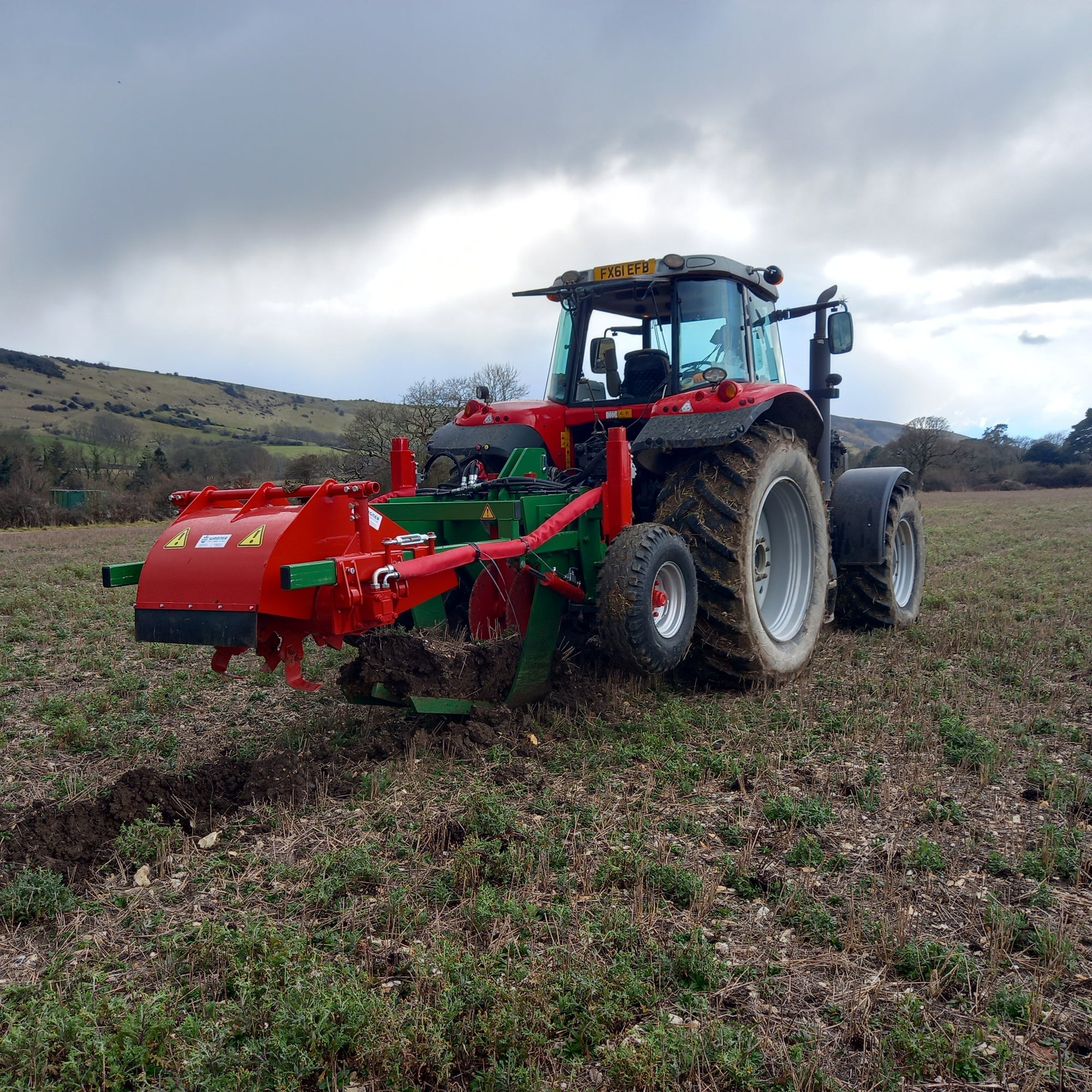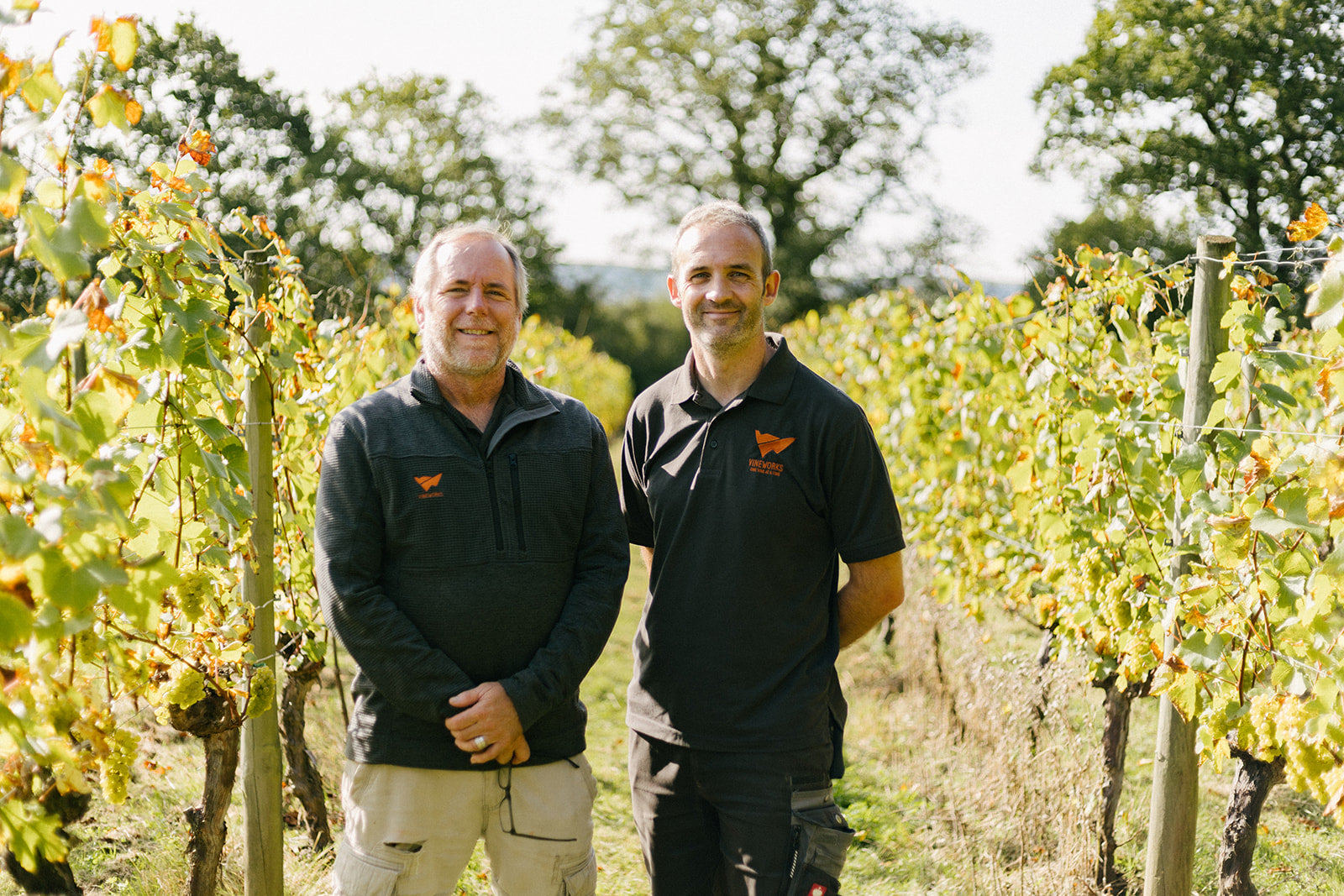Picking
◆ Picking crates – stackable, perforated, enough for two day’s picking (laid out under the vines the day before) 600 x 400 x 300mm is a comfortable size.
◆ Harvest secateurs – sharp, clean, numbered (one per picker plus spares)
◆ Picking buckets – standard 15-25L, plastic with handle (one per picker plus spares)
◆ Disposable gloves – blue, food grade
◆ Boxes of plasters – blue, food grade
Collecting (ground crew)
◆ Tractor (fuelled and serviced)
◆ Trailer (tailgate dropped where possible)
◆ Gloves
Palletising
◆ Pallets (300-500kgs of fruit/pallet)
◆ Pallet wrap
◆ Labels or sharpie
◆ Scale to calculate average weights etc.
◆ Logbook
◆ Pallet truck/forklift
Loading and transport
◆ Forklift, (or some means of loading lorry)
◆ Lorry plus driver for transport to winery.
◆ Your winery/buyer will want CAD documents with each load.




